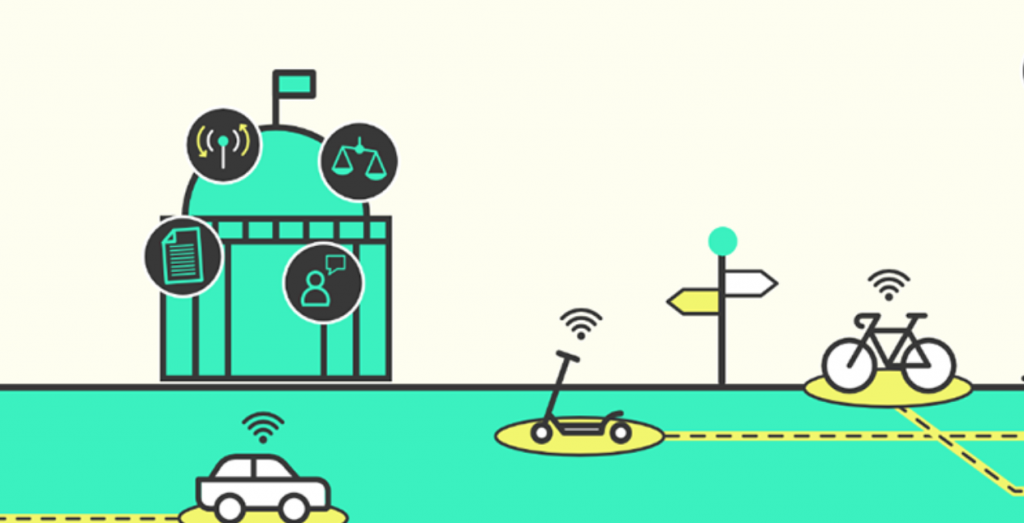
The European Robotics League is hosting a competition to integrate autonomous vehicles through Mobility Data Specification, along with robots, in creating “smart cities.” (Source: Open Mobility Foundation)
Euro Competition Focusing on Autonomous Vehicles, Robots for Smarter Cities
If you are involved with robots, either designing or operating you might be interested in the next major robot competition coming up in September in Bologna, Italy.
As part of the European Robotics League, SciRoc is hosting the ERL Smart Cities Robotics Challenge. The 2021 challenge is scheduled for Sept. 6-11. Organizers say the competition will be socially distanced and that they have made plans to cope with additional travel restrictions.
This isn’t a run-of-the-mill Battlebots competition that many came to know and love years ago on TV. It requires far more practical robots with simple, yet vital abilities to move products the final mile of delivery and other commonplace chores. Some involve repetitive actions or inspections at the municipal level.
Back in 2019 in the first ERL challenge, robots delivered coffee shop orders, responded to an emergency, and interacted with humans by navigating from one floor to another via elevator. Simple right?
The pandemic showed the world how vital and practical robots and drones proved themselves to be across a variety of professional applications.
Now the drive is to have smart cities interact with robots to improve basic municipal functions. Many are pairing with companies like Kiwibots. An article from techrepublic.com quotes Alison Brooks, an executive for Kiwibots:
“Customers take around seven minutes to get to the door to pick up an order, which represents 21 minutes an hour,” he said. “Considering that a delivery partner does three deliveries an hour tops, a Kiwibot could help a delivery partner make 33% more money per hour.”
In Arizona we have had robots making food deliveries on the Northern Arizona University campus for a few years already, so yes robots are good for the bottom line. But they can have far more impact on city life.
Robot-City Interaction
In the research paper “Robot-City Interaction: Mapping the Research Landscape—A Survey of the Interactions Between Robots and Modern Cities,” the authors define robots as machines that could “live in, engage with and benefit from a city ecosystem.” This includes agents with sensing capabilities and some levels of autonomy. The researchers identified six RCI areas of growth for cities:
Citizen assistance
Public space engagement
Mobility in urban dynamic environments
Autonomous urban transportation
Urban security
Urban maintenance
It’s about finding the balance between what is helpful and what is invasive with all technology these days, especially tech using AI.
It’s easy to understand how robots and drones can be force multipliers for police officers and maintenance workers, but cities should think ahead to avoid a techlash, Brooks said.
“Cities have to have policies in place around acceptable use that precedes the procurement of the technology,” she said. “Otherwise people are super leery about deploying things they don’t understand.”
MDS
Data transparency is another important part of the policy component of deploying robots and drones, particularly when it comes to mobility. When autonomous vehicles are sharing the roads with humans and other vehicles, city managers need to be able to monitor and track these vehicles. A new way of sharing information and implementing safety policies has emerged in the form of the Mobility Data Specification.
According to the Open Mobility Foundation, the Mobility Data Specification helps city leaders understand how public streets are used and provides the tools to improve that experience overall in these ways.
And it is in the understanding of this technology that will bring the next big leap in sustainable urban living.
read more at techrepublic.com







Leave A Comment